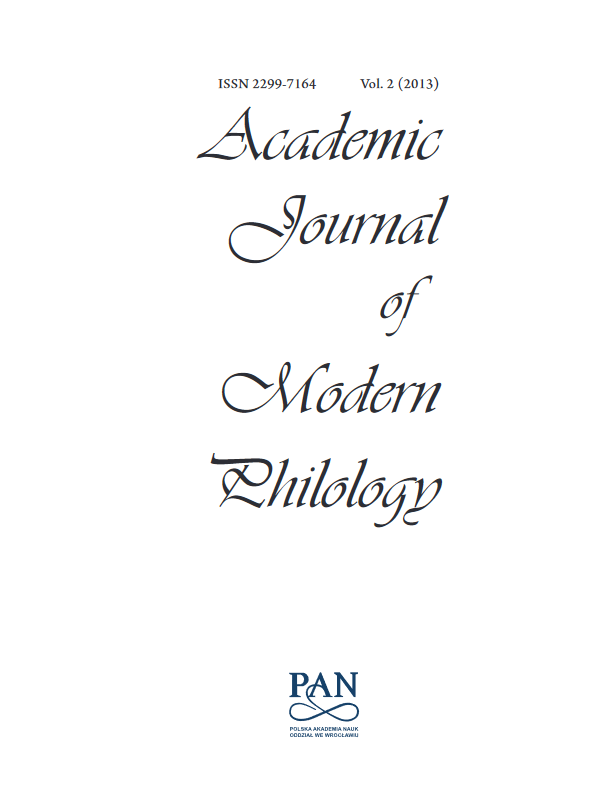Słowo o Teorii Metafor Pojęciowych w bieżącym dyskursie akademickim: komentarz do artykułu Ariadny Strugielskiej (2012) “Alternate Constuals of Source and Target Domains in Conceptual Metaphor”
A Word on Conceptual Metaphor Th eory in Current Academic Discourse: Inspired by Ariadna Strugielska’s (2012) Paper: “Alternate Construals of Source and Target Domains in Conceptual Metaphor”
Author(s): Kamila TurewiczSubject(s): Language studies, Language and Literature Studies, Philology
Published by: Komisja Nauk Filologicznych Oddziału Polskiej Akademii Nauk we Wrocławiu
Keywords: conceptual metaphor theory; academic discourse; conceptual domains; discretness; categorization; monosemy, informativeness
Summary/Abstract: Inspired by Strugielska’s (2012) article “Alternate Construals of Source and Target Domains in Conceptual Metaphor,” where the linguist presents a number of arguments questioning applicability of Conceptual Metaphor Th eory (CMT) to the analysis of linguistic meaning, I attempt to reanalyze some of the arguments through reference to primary sources: Lakoff and Johnson (1980), Lakoff (1990), Kövecses (2000, 2002, 2005, 2011). The issues of direct concern are: dichotomous nature of conceptual domains and their assumed discretness, the issue of differentiating the conceptual structure form the semantic structure and cognitive metaphorical projections from the relation of categorization, the question of monosemy constraint and degree of informativeness of metaphorical projections. The issues are discussed in the source article in the context of works whose authors question validity of CMT on the basis of (naturally occurring) language data from corpora. My own reanalysis of the examples discussed exhibit the extent to which metaphorical projections between the source and the target domains can provide motivations for the language expressions, accounting for their metaphoricity. At the same time, employing analytic tools available within Cognitive Grammar, I demonstrate that the extent of the contribution of metaphorical projections to respective semantic structures is determined by the position of the source domain in the matrix of the respective profile/base alignment.
Journal: Academic Journal of Modern Philology
- Issue Year: 2013
- Issue No: 2
- Page Range: 171-185
- Page Count: 15
- Language: Polish

